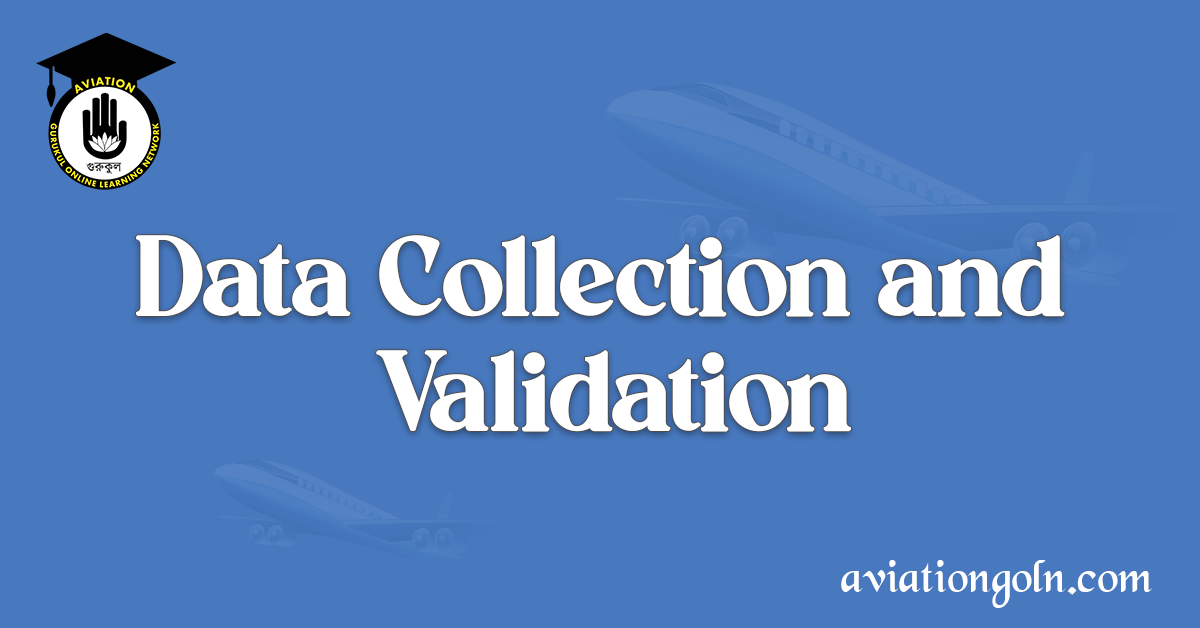Data Collection and Validation: The Aeronautical Information Service (AIS) is responsible for ensuring the flow of information and data necessary for the safety, regularity, and efficiency of international air navigation. In an age where data drives decisions, effective and accurate data collection and validation become paramount, especially in the aviation sector. This article delves deep into the significance, methodologies, and challenges of data collection and validation in AIS.
Data Collection and Validation: Data Management in Aeronautical Information Service
1. The Significance of Data in AIS
The AIS plays a crucial role in helping pilots, air traffic controllers, and other aviation professionals make informed decisions. This can include everything from flight planning, air traffic management, runway maintenance, and even emergency responses.
1.1 Safety: Accurate data ensures that pilots and air traffic controllers have the most up-to-date information on flight routes, possible obstructions, and conditions, which directly impacts flight safety.
1.2 Efficiency: With accurate data, flight paths can be optimized, saving fuel, time, and reducing environmental impacts.
1.3 Regularity: Regular updates and accurate data mean fewer interruptions and delays in flight schedules.

2. Data Collection in AIS
2.1 Primary Sources: These include instruments and devices placed at airports, such as weather monitoring systems, radar systems, and runway condition monitors.
2.2 Secondary Sources: These might include pilot reports, satellite imagery, or information from other airports and airlines.
2.3 Remote Sensing: With advancements in technology, remote sensing devices, including satellites and drones, are being increasingly used for data collection.
2.4 Human Observations: Ground staff, pilots, and air traffic controllers provide firsthand observations that feed into the AIS.

3. Data Validation
Once data is collected, it’s imperative to validate it before use.
3.1 Cross-Verification: Data from multiple sources can be cross-verified. For instance, weather data from an airport instrument can be cross-checked with satellite imagery.
3.2 Historical Data Comparison: By comparing current data with historical trends, anomalies can be detected.
3.3 Feedback Loops: Pilots and air traffic controllers can provide feedback on the accuracy of the data they receive.

4. Challenges in Data Collection and Validation
4.1 Volume: The sheer amount of data that AIS systems collect can be overwhelming, and not all of it is relevant.
4.2 Timeliness: The rapid pace of aviation operations requires almost real-time data collection and validation, which can be challenging.

4.3 Interoperability: With multiple sources of data, ensuring all data is compatible and integrated can be a hurdle.
4.4 Security Concerns: The data being handled by AIS is sensitive. Ensuring it’s secure from cyber threats is a growing concern.

5. Data Management Best Practices in AIS
5.1 Automated Validation: Using AI and machine learning algorithms to automatically validate incoming data can enhance efficiency.
5.2 Standardization: Adopting international standards for data collection and validation ensures consistency and compatibility.
5.3 Continuous Training: As technology and data sources evolve, ongoing training for AIS staff is crucial.
5.4 Feedback Mechanisms: Establishing robust feedback mechanisms can help in early detection of data inaccuracies.

6. The Future of Data Management in AIS
6.1 Predictive Analysis: Instead of just collecting and validating present data, advanced algorithms can be used to predict future trends.
6.2 Integration of IoT: Internet of Things (IoT) devices can further enhance the granularity and accuracy of data collection.
6.3 Blockchain in Data Validation: Blockchain technology can ensure that once data is validated, it remains tamper-proof.

The role of data collection and validation in AIS cannot be understated. With the growth in air travel and the increasing complexity of aviation operations, managing this data efficiently and accurately is more crucial than ever. By embracing new technologies, standardizing practices, and ensuring robust validation mechanisms, AIS can ensure the continued safety, regularity, and efficiency of global aviation operations.
